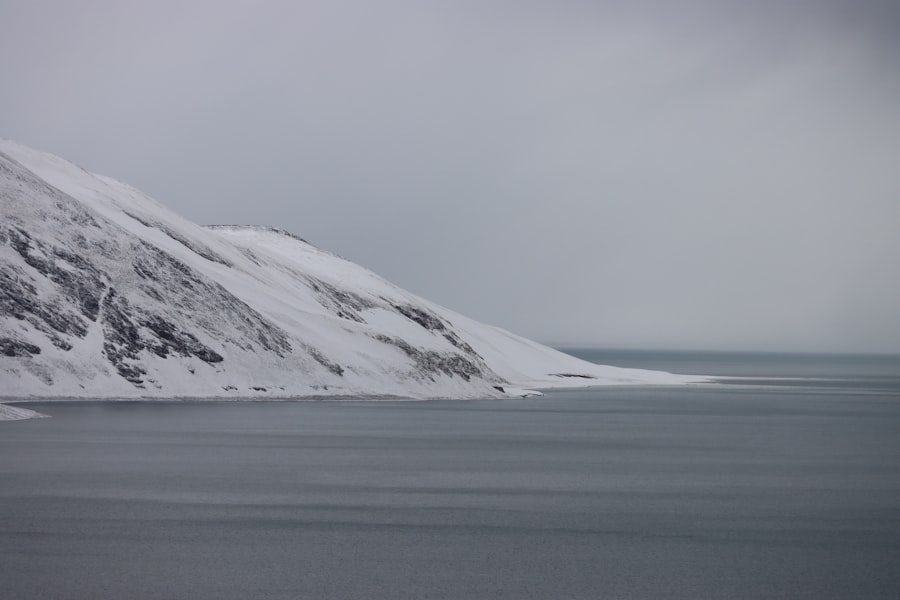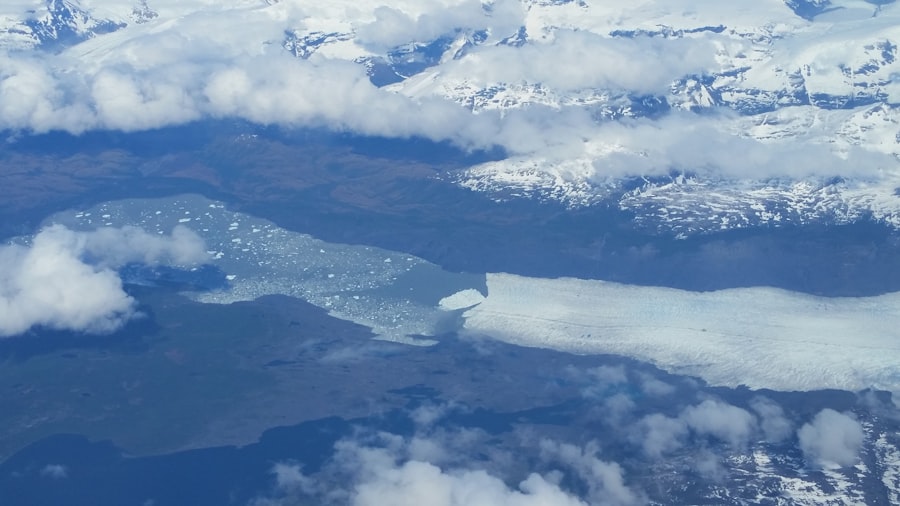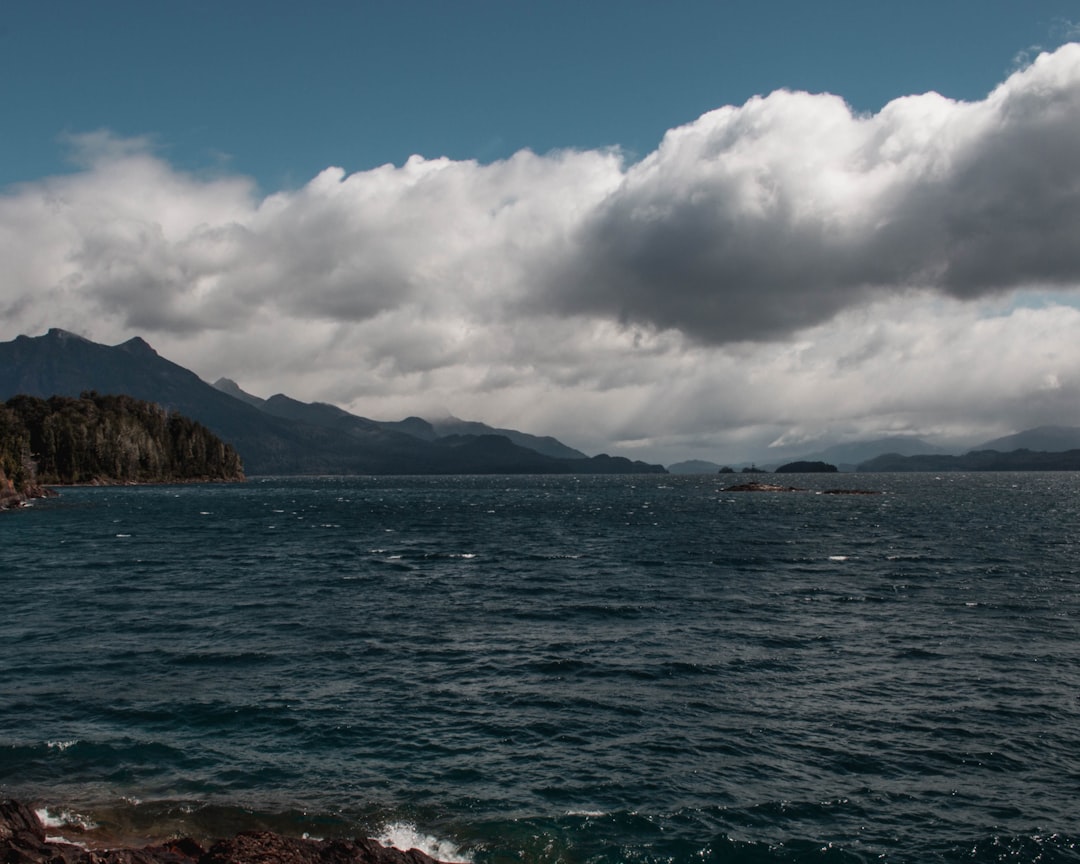The Drake Passage Lake, a body of water nestled between the southern tip of South America and Antarctica, is a region steeped in both natural beauty and scientific intrigue. This lake, often overshadowed by the tumultuous waters of the Drake Passage, serves as a unique ecosystem that plays a crucial role in the global climate system. Its waters are not only a vital habitat for diverse marine life but also a significant area for research into climate change and oceanography.
As explorers and scientists continue to study this remarkable area, they uncover layers of complexity that reveal the lake’s importance beyond its picturesque scenery. The Drake Passage Lake is not merely a geographical feature; it is a living laboratory where the effects of climate change can be observed firsthand.
The interplay of its unique flora and fauna, geological history, and cultural significance adds depth to its narrative, making it a subject of fascination for researchers and adventurers alike.
Key Takeaways
- The Drake Passage Lake is a unique and enigmatic body of water located in the southern tip of South America.
- The geological formation of the Drake Passage Lake is a result of tectonic activity and glacial processes over millions of years.
- The flora and fauna of the Drake Passage Lake are adapted to extreme conditions, with many species found nowhere else on Earth.
- The mysterious history of the Drake Passage Lake includes tales of ancient civilizations and unexplained phenomena.
- Scientific research in the Drake Passage Lake has led to important discoveries about climate change and oceanic currents.
The Geological Formation of the Drake Passage Lake
The geological formation of the Drake Passage Lake is a tale that spans millions of years, shaped by tectonic movements and climatic shifts. This region was once part of a larger landmass before the forces of plate tectonics began to pull it apart. The separation of South America from Antarctica created the conditions necessary for the formation of the lake, as oceanic currents began to carve out its current shape.
Over time, glacial activity further sculpted the landscape, leaving behind a unique topography that includes deep basins and underwater ridges. The lake’s geological history is not just a story of physical changes; it also reflects the broader environmental shifts that have occurred on Earth. As glaciers advanced and retreated, they deposited sediments that enriched the lake’s ecosystem.
These sediments provide valuable insights into past climate conditions, allowing scientists to reconstruct historical weather patterns and understand how they may influence future changes. The geological features of the Drake Passage Lake serve as a testament to the dynamic processes that have shaped our planet over eons.
Unique Flora and Fauna of the Drake Passage Lake

The Drake Passage Lake is home to an astonishing array of flora and fauna, many of which are endemic to this unique environment. The lake’s nutrient-rich waters support a diverse range of marine life, from microscopic phytoplankton to majestic whales. These organisms form the foundation of the food web, sustaining various species that thrive in this cold, nutrient-dense habitat.
Among the notable inhabitants are seals, penguins, and numerous fish species that have adapted to the harsh conditions of the Southern Ocean. In addition to its marine life, the surrounding areas of the Drake Passage Lake boast unique terrestrial ecosystems. Hardy plants have evolved to withstand the extreme weather conditions, creating a tapestry of life that is both resilient and beautiful.
The interplay between land and water in this region fosters a rich biodiversity that is crucial for maintaining ecological balance. Researchers continue to study these organisms, uncovering their adaptations and roles within the ecosystem, which may hold keys to understanding resilience in the face of climate change.
The Mysterious History of the Drake Passage Lake
| Location | Drake Passage, Southern Ocean |
|---|---|
| Depth | Unknown |
| Discovery | First reported in 2007 |
| Size | Approximately 60 square miles |
| Formation | Believed to be a result of melting glaciers |
| Research | Ongoing studies to understand its origin and impact |
The history of human interaction with the Drake Passage Lake is as enigmatic as its geological formation. Early explorers were drawn to this remote region, often driven by tales of adventure and discovery. However, their journeys were fraught with peril due to treacherous waters and unpredictable weather patterns.
The lake’s isolation has contributed to its mystique, as few have ventured into its depths to uncover its secrets. Archaeological evidence suggests that indigenous peoples may have inhabited areas surrounding the lake long before European explorers arrived. Their stories and traditions are intertwined with the landscape, reflecting a deep connection to nature that has persisted through generations.
The lake’s history is not merely one of exploration; it is also a narrative of survival and adaptation in an unforgiving environment. As researchers delve into this rich tapestry of human history, they uncover stories that highlight the resilience and ingenuity of those who have called this region home.
Scientific Research and Discoveries in the Drake Passage Lake
Scientific research in the Drake Passage Lake has yielded groundbreaking discoveries that enhance our understanding of marine ecosystems and climate dynamics. Researchers utilize advanced technologies such as remote sensing and underwater drones to explore the lake’s depths, gathering data on water temperature, salinity, and biodiversity. These studies provide critical insights into how changing ocean conditions affect marine life and contribute to broader climate patterns.
One significant area of research focuses on the impact of melting glaciers on sea level rise and ocean circulation. As glaciers retreat in response to global warming, they release freshwater into the lake, altering salinity levels and potentially disrupting established marine ecosystems. Scientists are closely monitoring these changes to predict future impacts on both local wildlife and global climate systems.
The findings from these studies not only contribute to academic knowledge but also inform conservation efforts aimed at protecting this fragile environment.
The Role of the Drake Passage Lake in Climate Change

The Drake Passage Lake plays a pivotal role in understanding climate change due to its position within critical ocean currents that influence global weather patterns. As part of the Southern Ocean, it acts as a conduit for heat exchange between the atmosphere and ocean, impacting climate systems far beyond its immediate vicinity.
Moreover, changes in the lake’s temperature and salinity can have cascading effects on marine ecosystems and weather patterns worldwide. For instance, alterations in ocean currents can lead to shifts in fish populations, affecting fisheries and local economies. Understanding these dynamics is crucial for developing effective strategies to mitigate climate change impacts.
As researchers continue to study the lake’s role in global climate systems, they emphasize the need for comprehensive conservation efforts to protect this vital resource.
Challenges and Dangers of Exploring the Drake Passage Lake
Exploring the Drake Passage Lake presents numerous challenges and dangers that can deter even seasoned adventurers. The unpredictable weather conditions characteristic of this region can turn calm waters into turbulent seas within moments. Strong winds and sudden storms pose significant risks for vessels navigating these waters, making careful planning essential for any expedition.
Additionally, the remoteness of the lake adds another layer of difficulty for researchers and explorers alike. Accessing this pristine environment often requires specialized equipment and expertise in navigating harsh conditions. Despite these challenges, many are drawn to the allure of discovery, motivated by a desire to uncover the secrets hidden beneath its surface.
Those who undertake such journeys must be well-prepared and equipped with knowledge about both the environment and safety protocols to ensure successful exploration.
Cultural and Mythological Significance of the Drake Passage Lake
The cultural significance of the Drake Passage Lake extends beyond its natural beauty; it is woven into the fabric of local myths and legends. Indigenous peoples have long revered this landscape, attributing spiritual meaning to its waters and surrounding mountains. Stories passed down through generations reflect a deep respect for nature and an understanding of its power.
In contemporary culture, the lake has captured the imagination of artists, writers, and filmmakers who seek to convey its enigmatic beauty through various mediums. These creative interpretations often highlight themes of adventure, exploration, and humanity’s relationship with nature. As interest in environmental conservation grows, so too does recognition of the cultural narratives tied to this remarkable region.
By honoring these stories, society can foster a greater appreciation for both the natural world and its cultural heritage.
Conservation Efforts and Protection of the Drake Passage Lake
Conservation efforts aimed at protecting the Drake Passage Lake are crucial for preserving its unique ecosystems and mitigating human impact on this fragile environment. Various organizations work tirelessly to raise awareness about the importance of safeguarding marine habitats from pollution, overfishing, and climate change. Collaborative initiatives involving scientists, policymakers, and local communities strive to create sustainable practices that balance human activity with ecological preservation.
One notable effort includes establishing marine protected areas (MPAs) within the lake’s vicinity to safeguard critical habitats from exploitation. These MPAs serve as sanctuaries for marine life while providing researchers with opportunities to study undisturbed ecosystems. Additionally, educational programs aimed at local communities emphasize sustainable practices that promote environmental stewardship.
By fostering a sense of responsibility towards this unique ecosystem, conservationists hope to ensure its health for future generations.
Future Exploration and Study of the Drake Passage Lake
The future exploration and study of the Drake Passage Lake hold immense potential for advancing scientific knowledge about marine ecosystems and climate dynamics. As technology continues to evolve, researchers are equipped with more sophisticated tools for studying this remote environment. Innovations such as autonomous underwater vehicles (AUVs) enable scientists to gather data from previously inaccessible areas, expanding their understanding of underwater habitats.
Moreover, interdisciplinary collaborations among scientists from various fields promise to yield new insights into complex ecological interactions within the lake. By integrating knowledge from oceanography, biology, geology, and climate science, researchers can develop comprehensive models that predict how changes in one aspect may affect others. This holistic approach is essential for addressing pressing environmental challenges while fostering sustainable practices that protect this vital resource.
The Enigmatic Beauty of the Drake Passage Lake
In conclusion, the Drake Passage Lake stands as a testament to nature’s resilience and complexity. Its geological formation tells a story of transformation over millennia while its unique flora and fauna showcase life’s adaptability in extreme conditions. The lake’s mysterious history intertwines with human narratives that reflect our relationship with nature—one marked by both reverence and exploration.
As scientific research continues to unveil new discoveries about this remarkable ecosystem, it becomes increasingly clear that protecting the Drake Passage Lake is essential for understanding our planet’s future. Through conservation efforts and continued exploration, society can ensure that this enigmatic beauty remains preserved for generations to come—a living testament to Earth’s intricate web of life.
The Drake Passage is a significant body of water that connects the Atlantic and Pacific Oceans, known for its challenging navigation conditions and rich marine biodiversity. For those interested in exploring more about the geographical and historical significance of this region, you might find the article on MyGeoQuest insightful. It delves into the unique characteristics of the Drake Passage and its role in global ocean circulation. To learn more, visit the related article on MyGeoQuest.
WATCH NOW! Drake Passage: Earth’s Deadliest Waters Revealed
FAQs
What is the Drake Passage Lake?
The Drake Passage Lake is a hypothetical concept proposed by a group of scientists in 2016. It suggests the existence of a large body of water hidden beneath the ice of the Drake Passage, a narrow stretch of water between South America’s Cape Horn and the South Shetland Islands of Antarctica.
How was the Drake Passage Lake discovered?
The potential existence of the Drake Passage Lake was proposed based on satellite data and airborne radar measurements that indicated the presence of a large subglacial basin in the region.
What are the implications of the Drake Passage Lake?
If the Drake Passage Lake were to exist, it could have significant implications for our understanding of Antarctic ice dynamics, ocean circulation, and climate change. It could also potentially harbor unique ecosystems and provide insights into the history of the region.
Is the Drake Passage Lake confirmed to exist?
As of now, the existence of the Drake Passage Lake remains a hypothesis and has not been confirmed through direct observation or drilling. Further research and exploration are needed to determine the actual presence of the subglacial lake.
